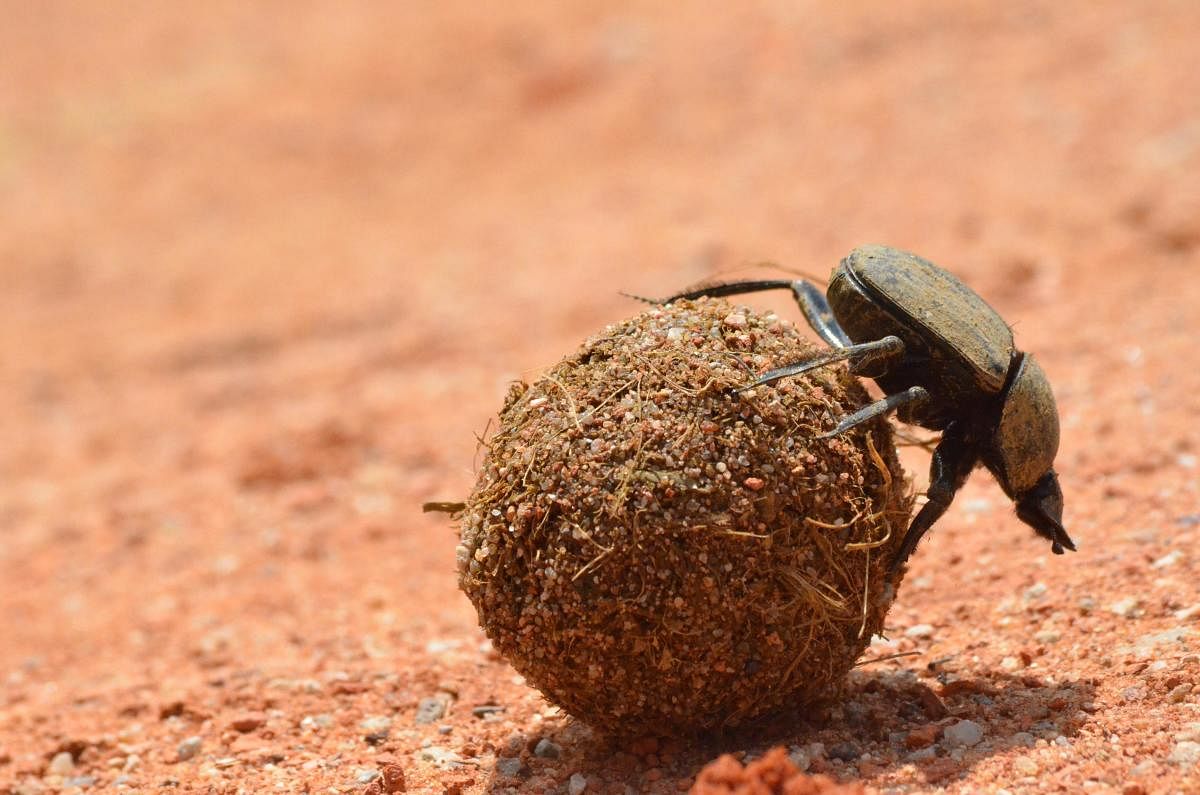
Zoey, our little furball, loves attention, even in what should be her most private moments. She sniffs around with a sense of purpose only to pick a spot slap-bang in the middle of the road to relieve herself.
Many a city driver has had to suffer the sight of a defecating Shih Tzu staring pompously into the headlights, with her embarrassed Dad scooping the ordure in full glare. I suspect Zoey imagines an eager audience for what she deems a tour de force.
I recall my own distinct dog-walking moment when a bunch of women on a morning stroll caught me scooping-up doggy do, and one of the sympathetic souls muttered ‘Kashta’ (difficult)! On the farm though, we have help. Zoey’s doo-doo is meticulously cleared round-the-clock at Navilu Kaadu with zero intervention from her anointed human poop-scoopers. Our resident dung beetles catch wind of the feast Zoey lays out for them twice a day, and they throng the site of the banquet in a trice. The beetles get to work rolling the turd into spheres and haul away the spoils, pushing them in reverse with their hindlegs.
The world’s strongest bug?
Dung beetles can be rollers, tunnelers or dwellers. ‘Rollers’ roll dung pats into balls for use as food and nesting chambers, ‘tunnelers’ bury the dung wherever they find it and ‘dwellers,’ well they just dwell in the dung pile.
Roller dung beetles are a common sight around Navilu Kaadu, especially when we feed Jeevamrutha to our crops. A fermented concoction of desi cow dung, urine, jaggery and gram flour, Jeevamrutha serves as a microbial culture of good soil bacteria. It is the second of the four pillars of the Subhash Palekar Natural Farming (SPNF) method and enriches the soil, which in turn bestows bountiful, nutritious, chemical-free produce. Seed treatment, mulching and soil aeration make up the other three pillars.
The rich blend draws dung beetles like a magnet, and we inevitably spot ‘roller’ beetles rolling and ferrying tiny balls of Jeevamrutha in and around the containers holding the mixture.
The story of the humble dung beetle is fascinating — one that involves stars and galaxies. These little insects are mini astronomers and navigate by the stars. They have supernatural strength and punch way above their weight. Researchers have found that Onthophagus Taurus, a species of horned dung beetle can pull 1,141 times its own body weight — the equivalent of six full double-decker buses to a human, making it the world’s strongest bug!
Dung beetles are drawn to the faecal matter of herbivores and omnivores by scent. Male beetles roll dung pat into little balls and snare an agreeable she-beetle while they are at it. The males mount their dung balls and perform a little jig, turning round and round like whirling dervishes. In reality, they are taking in celestial cues such as the positions of the sun, the moon and the glow of the Milky Way galaxy to get their bearings. They use these cues to resolutely steer the dung balls in a straight path over and through all obstacles, in the opposite direction of the dung pile.
It is crucial that the beetles cart the dung balls away from the dung pile as quickly as possible in a linear direction. They do this to avoid other thieving dung beetles from stealing their precious cargo, should they end up circling back to the pile.
They bury their booty in soft earth to make cosy love nests called ‘brood balls.’ The pair then mate, and the female lays one egg in each brood ball. The hatched larvae feed on the dung, pupate underground and eventually emerge as adult beetles with wings.
Dung beetles clean up waste, control breeding flies and parasites in the dung, and aid secondary seed dispersal. Most notably, these tiny stargazers are mother nature’s nutrient cycling agents that render yeoman ecosystem services, enriching the soil with their intriguing way of life.
Wish we had these live poop-scoopers cleaning up after Zoey around our city home too.
Rooting For Nature is a monthly column on an off-kilter urban family’s trysts with nature on a natural farm.
The author chipped away at a software marketing career before shifting gears to independent consulting and natural farming. She posts as @ramyacoushik on Instagram. Reach her at bluejaydiaries@gmail.com